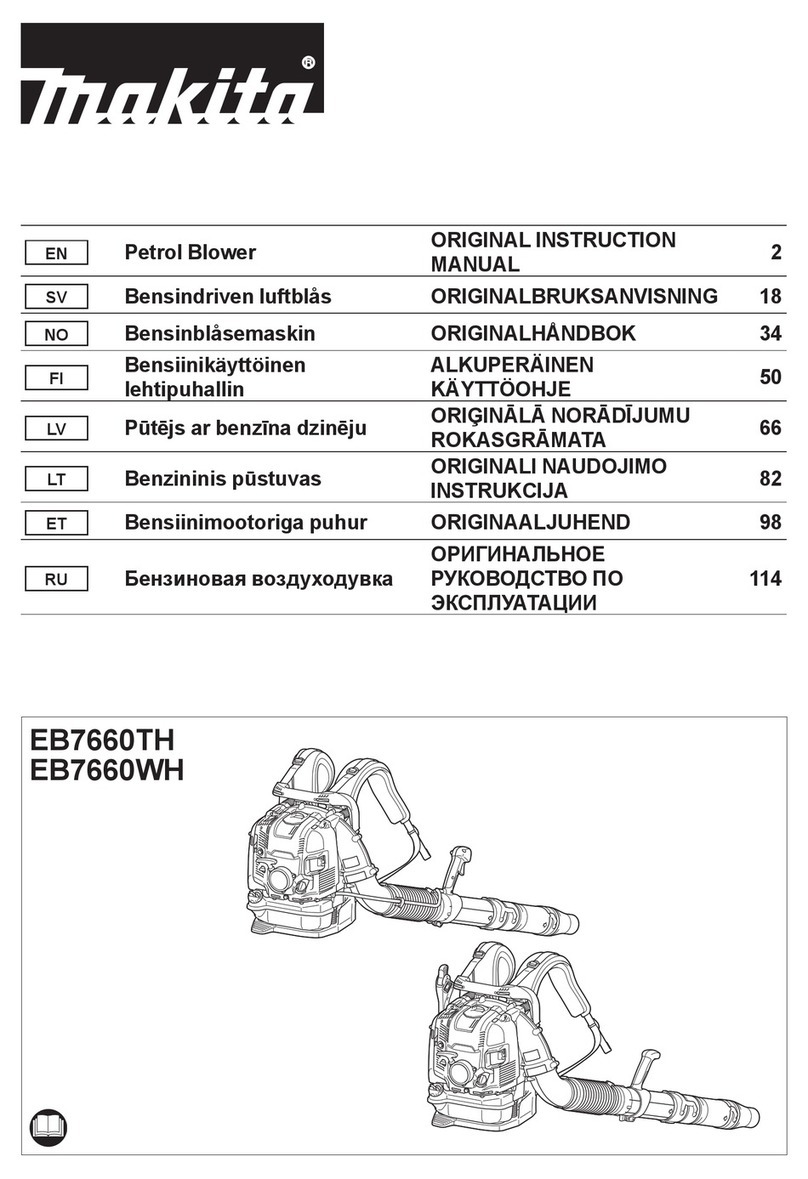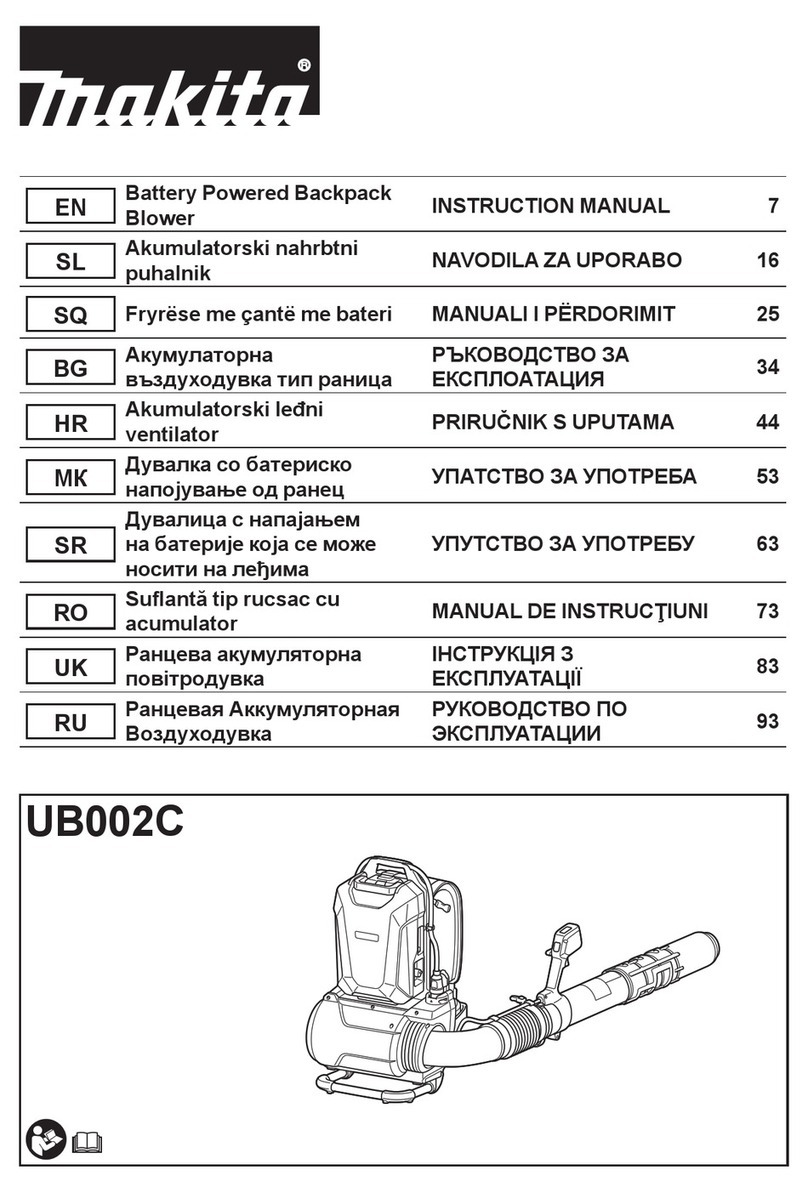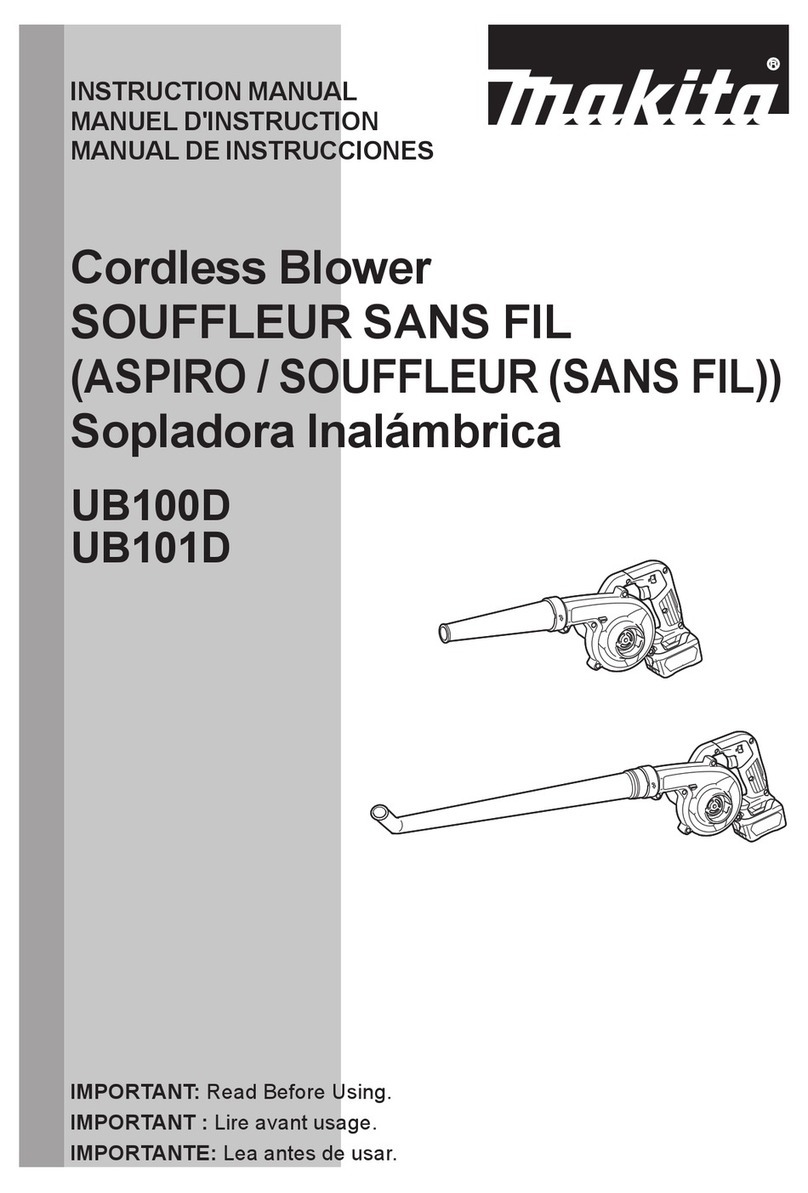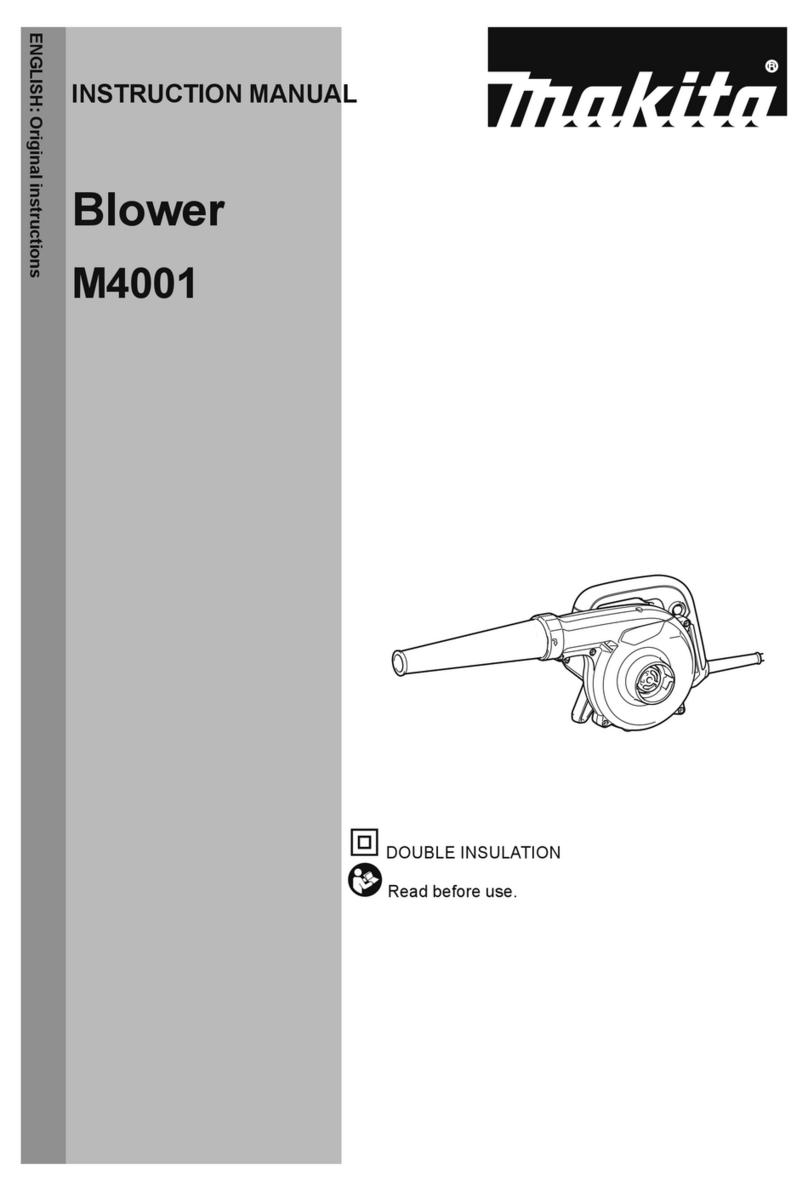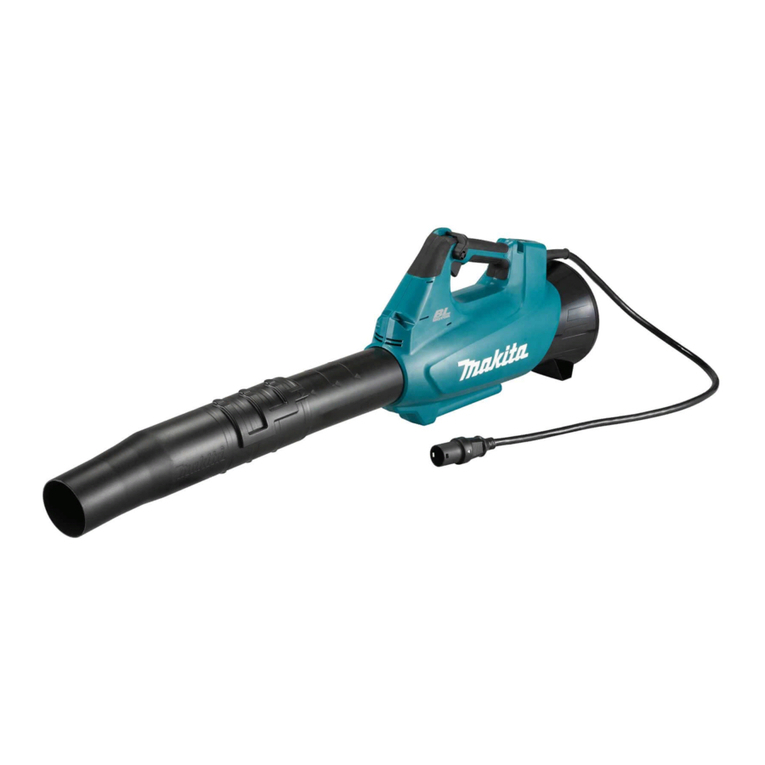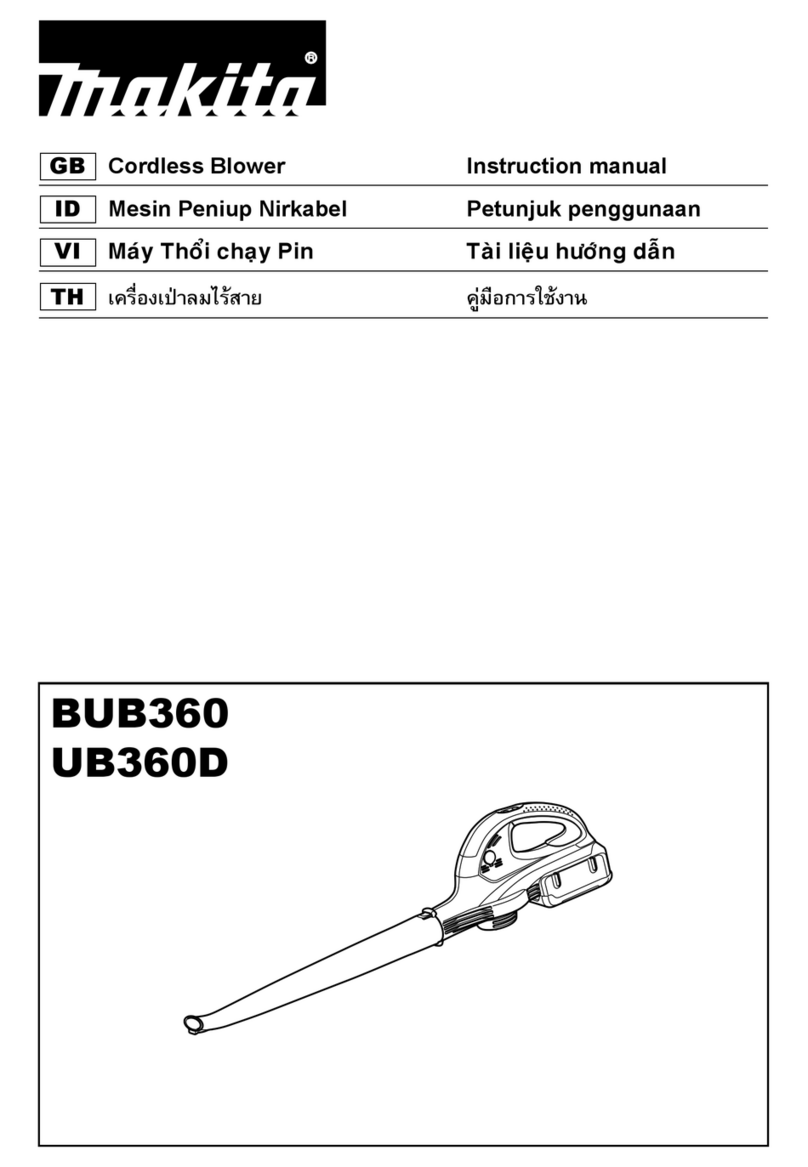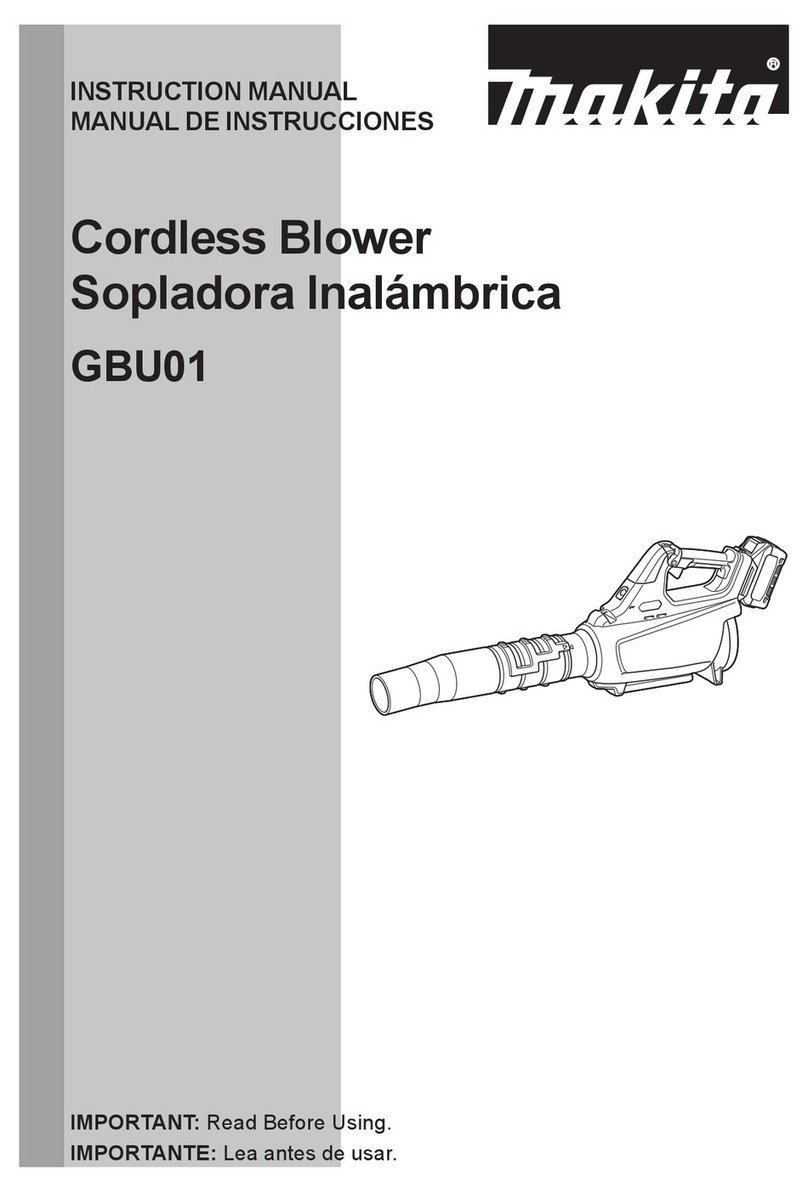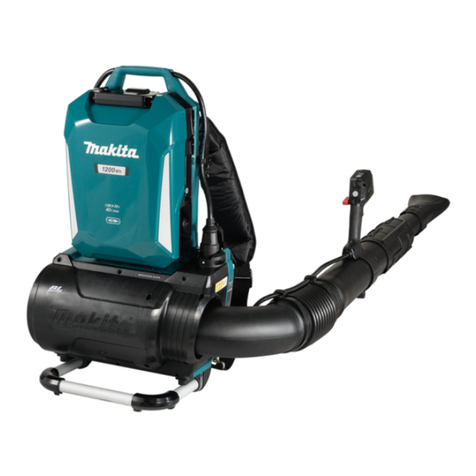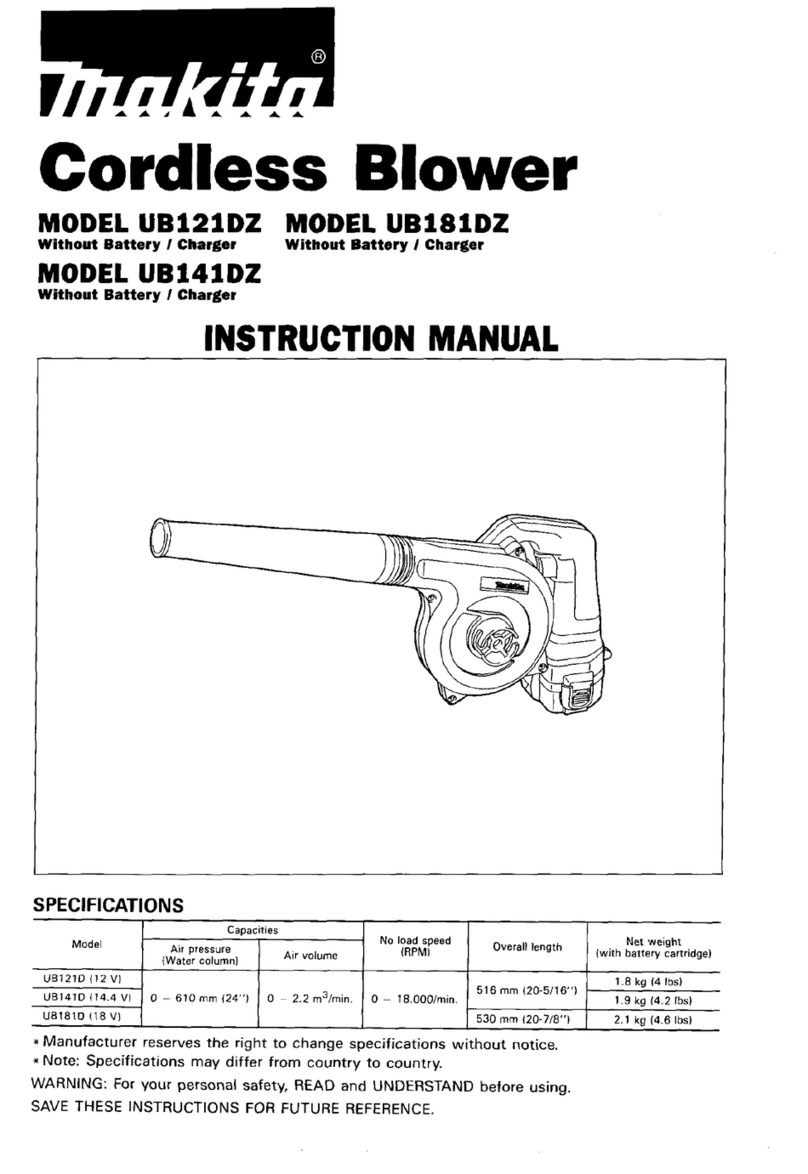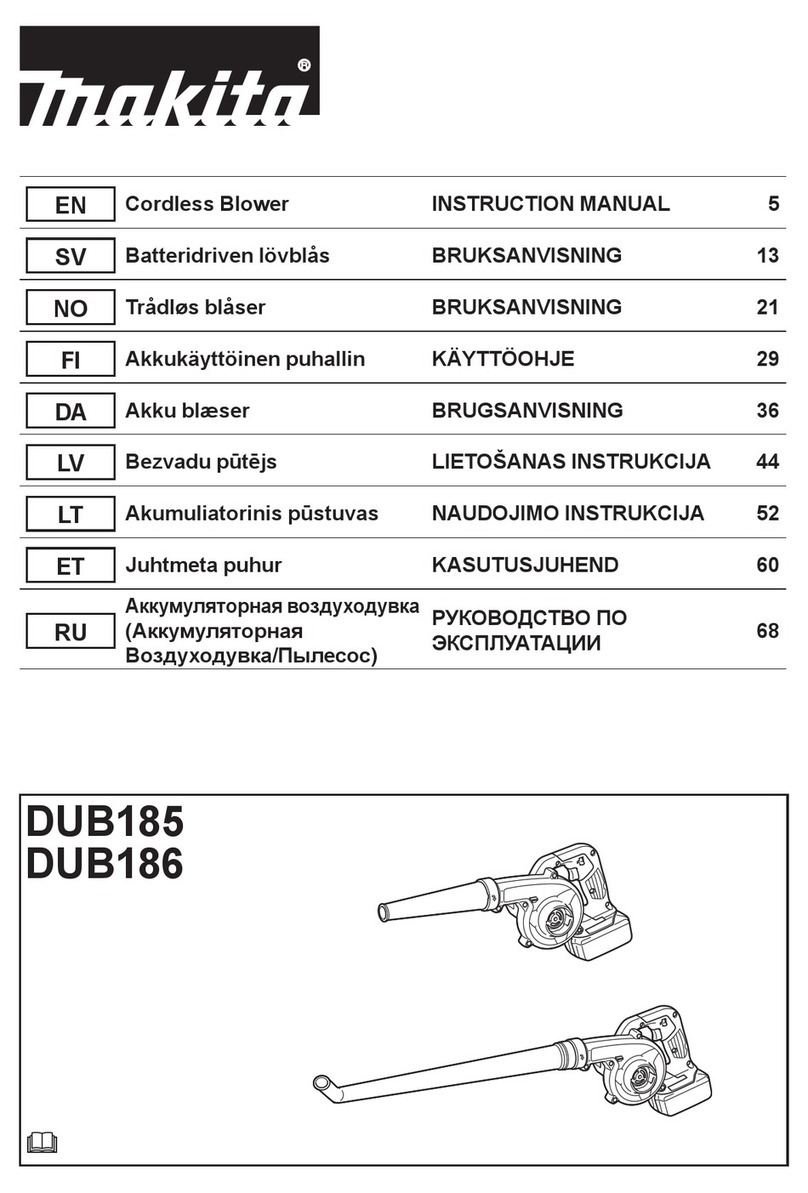
4ENGLISH
14. Using rakes and brooms to loosen debris
before blowing is recommended.
15. If the blower strikes any foreign objects or
should start making any unusual noise or
vibration, immediately switch o the blower
to stop it. Remove the battery from the blower
and inspect the blower for damage before
restarting and operating the blower. If the
blower is damaged, ask Makita Authorized
Service Centers for repair.
16. Do not insert ngers or other objects into
suction inlet or blower outlet.
17. Prevent unintentional starting. Ensure the
switch is in the o-position before inserting
battery, picking up or carrying the blower.
Carrying the blower with your nger on the
switch or energizing the blower that has the
switch on invites accidents.
18. Never blow dangerous materials, such as
nails, fragments of glass, or blades.
19.
Do not operate the blower near ammable materials.
20. Avoid operating the blower for a long time in
low temperature environment.
21.
Do not use the machine when there is a risk of lightning.
22. When you use the machine on muddy ground,
wet slope, or slippery place, pay attention to
your footing.
23. Avoid working in poor environment where
increased user fatigue is expected.
24. Do not use the machine in bad weather where
visibility is limited. Failure to do so may cause
fall or incorrect operation due to low visibility.
25. Do not submerge the machine into a puddle.
26. When wet leaves or dirt adhere to the suc-
tion mouth (ventilation window) due to rain,
remove them.
Maintenance and storage
1. Keep all nuts, bolts and screws tight to be sure
the blower is in safe working condition.
2. If the parts are worn or damaged, replace them
with parts provided by Makita.
3. Store the blower in a dry place out of the reach
of children.
4. When you stop the blower for inspection, ser-
vicing, storage, or changing accessory, switch
o the blower and make sure that all moving
parts come to a complete stop, and remove the
battery. Cool down the blower before making
any work on the blower. Maintain the blower
with care and keep it clean.
5. Always cool down the blower before storing.
6. Do not expose the blower to rain. Store the
blower indoors.
7. When you lift the blower, be sure to bend your
knees and be careful not to hurt your back.
8. Do not leave the machine unattended outdoors
in the rain.
9.
Do not wash the machine with high pressure water.
10. When storing the machine, avoid direct sun-
light and rain, and store it in a place where it
does not get hot or humid.
11. Perform inspection or maintenance in a place
where rain can be avoided.
12. After using the machine, remove the adhered
dirt and dry the machine completely before
storing. Depending on the season or the area,
there is a risk of malfunction due to freezing.
13. Do not pick up or carry the machine by holding
only the cord.
Battery tool use and care
1. Recharge only with the charger specied by
the manufacturer. A charger that is suitable for
one type of battery pack may create a risk of re
when used with another battery pack.
2. Use power tools only with specically desig-
nated battery packs. Use of any other battery
packs may create a risk of injury and re.
3. When battery pack is not in use, keep it away
from other metal objects, like paper clips,
coins, keys, nails, screws or other small metal
objects, that can make a connection from one
terminal to another. Shorting the battery termi-
nals together may cause burns or a re.
4.
Under abusive conditions, liquid may be ejected
from the battery; avoid contact. If contact acci-
dentally occurs, ush with water. If liquid con-
tacts eyes, additionally seek medical help. Liquid
ejected from the battery may cause irritation or burns.
5.
Do not use a battery pack or tool that is damaged or
modied. Damaged or modied batteries may exhibit unpre-
dictable behaviour resulting in re, explosion or risk of injury.
6. Do not expose a battery pack or tool to re or
excessive temperature. Exposure to re or tem-
perature above 130 °C may cause explosion.
7. Follow all charging instructions and do not
charge the battery pack or tool outside the
temperature range specied in the instruc-
tions. Charging improperly or at temperatures
outside the specied range may damage the
battery and increase the risk of re.
Electrical and battery safety
1. Do not dispose of the battery(ies) in a re.
The cell may explode. Check with local codes for
possible special disposal instructions.
2.
Do not open or mutilate the battery(ies). Released
electrolyte is corrosive and may cause damage to the
eyes or skin. It may be toxic if swallowed.
3.
Do not charge battery in rain, or in wet locations.
4. Do not charge the battery outdoors.
5. Do not handle charger, including charger plug,
and charger terminals with wet hands.
6. Do not replace the battery in the rain.
7. Do not wet the terminal of battery with liquid
such as water, or submerge the battery. Do not
leave the battery in the rain, nor charge, use,
or store the battery in a damp or wet place. If
the terminal gets wet or liquid enters inside of bat-
tery, the battery may be short circuited and there is
a risk of overheat, re, or explosion.
8. After removing the battery from the machine or
charger, be sure to attach the battery cover to
the battery and store it in a dry place.
9. Do not replace the battery with wet hands.
10. If the battery gets wet, drain the water inside
and then wipe it with a dry cloth. Dry the bat-
tery completely in a dry place before use.
